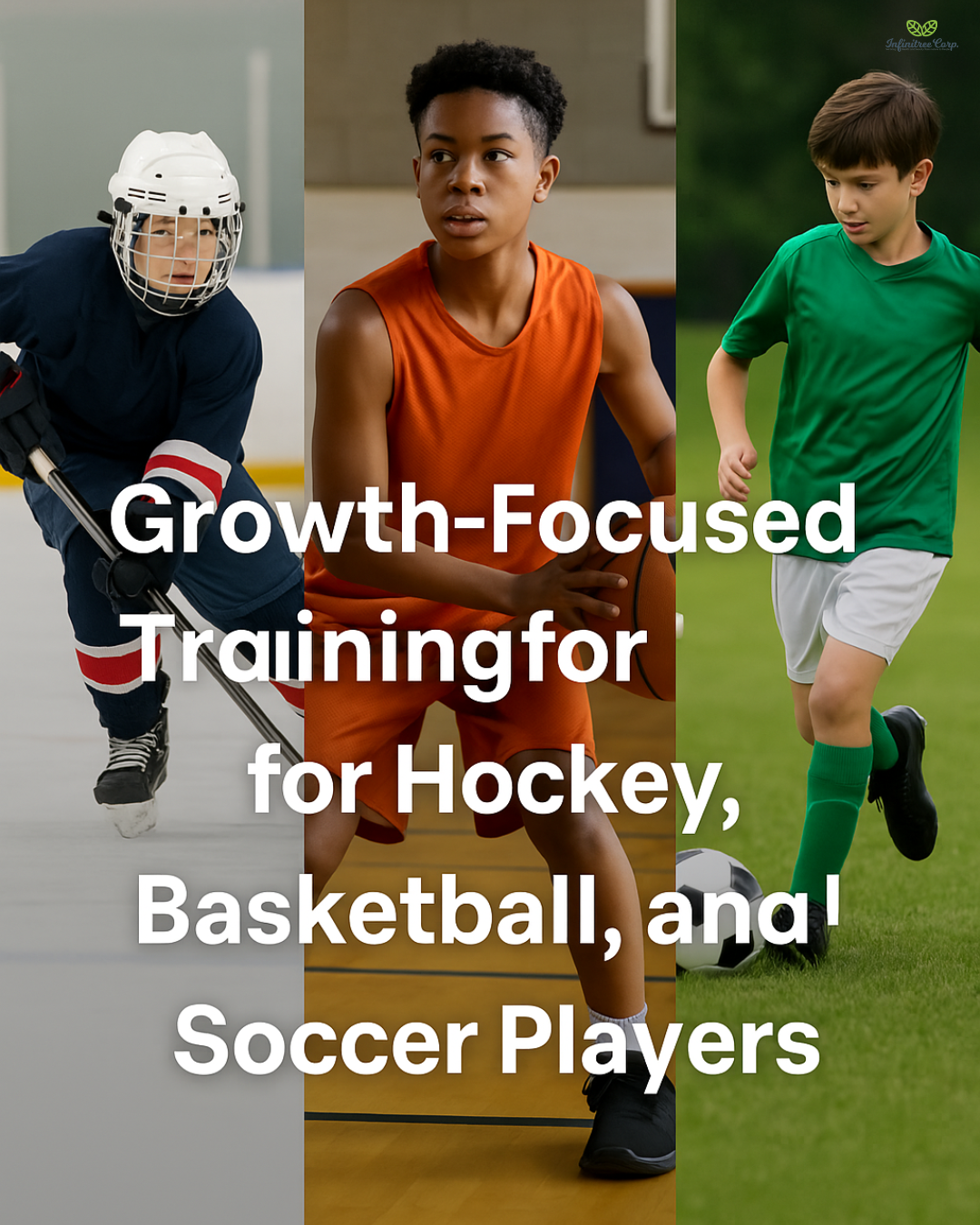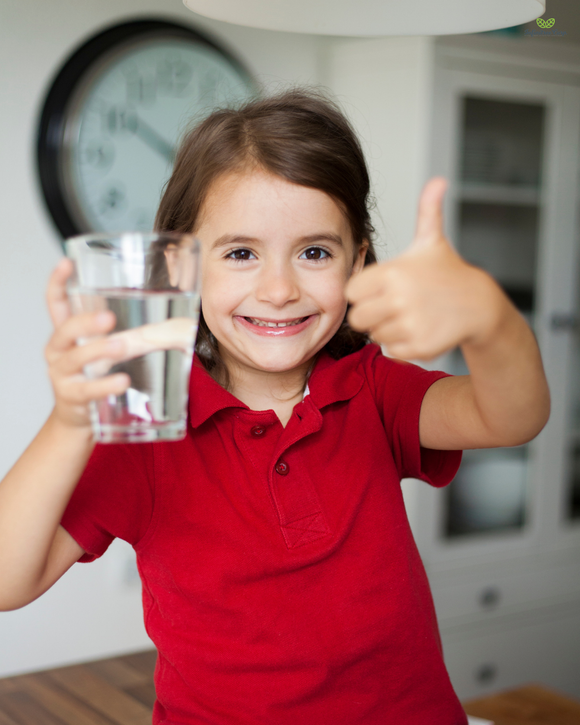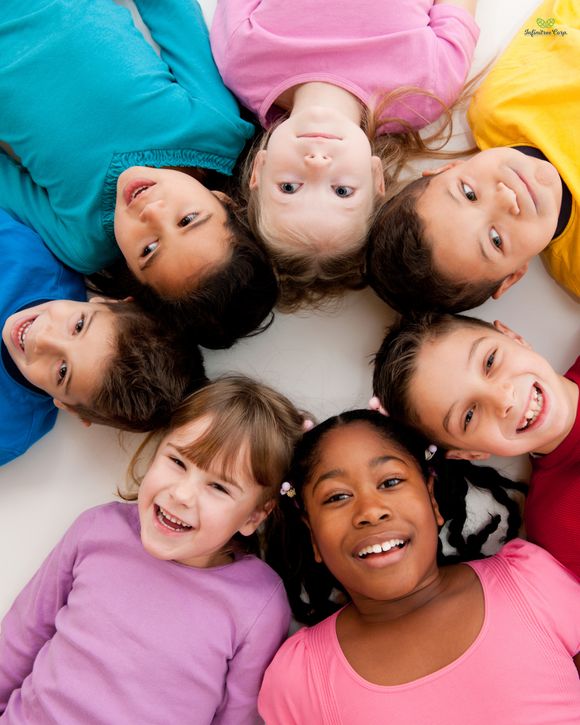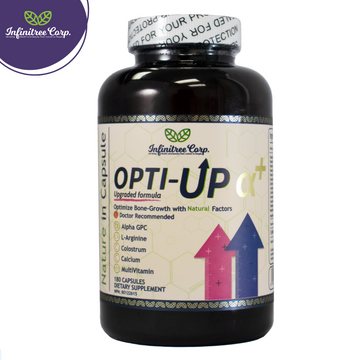
Growth-Focused Training for Young Hockey, Basketball, and Soccer Athletes
InfinitreeEditor.Jo
Growth-Focused Training for Young Hockey, Basketball, and Soccer Athletes
The Training Shift That Unlocked Growth
Tyler, 13, had a dream: to make the elite hockey team in his town. He had the skills and determination—but his size often worked against him. His parents tried everything: more practice, more drills, more protein shakes.
But then, a youth strength coach pointed out something crucial: Tyler’s training needed to match his age and growth stage, not just his sport.
Once his program focused on mobility, proper rest, jump-based plyometrics, and growth-supporting nutrition, everything changed. His posture improved. His vertical leap increased. And within a season—he grew 2 inches taller and got selected for the team.
The lesson? What you do off the field or rink is just as important as the drills you run during practice.
Why Sport-Specific Athletes Need Growth-Aware Training
If your child plays a physically demanding sport like ice hockey, basketball, or soccer, their growth stage must be considered in training design.
📌 Overtraining too early can lead to:
-
Burnout
-
Injury
-
Stalled growth
-
Hormonal imbalance
📌 But the right growth-stage training can:
-
Increase growth hormone release
-
Support bone and joint development
-
Improve athletic performance
-
Prevent injury during growth spurts
Growth + Sport = A Unique Development Window
Most kids experience their biggest height acceleration between 10–16 years. This is the “growth spurt window,” when growth plates are most active.
But each sport puts different pressures on the body:
🏒 Hockey:
-
Requires core strength, explosive bursts, and balance.
-
Heavy gear can strain spine/posture if training isn’t supportive.
🏀 Basketball:
-
Involves jumping, sprinting, and shoulder/arm extension.
-
Height is an advantage, but so is flexibility and joint strength.
⚽ Soccer:
-
Combines speed, coordination, endurance, and agility.
-
Constant running stresses lower joints during growth phases.
That’s why kids in these sports need a balanced training plan that supports both their performance and their natural height development.
The Science: Growth Hormone and Physical Activity
Physical activity—especially weight-bearing and jumping exercises—can increase the body’s natural production of human growth hormone (HGH).
✅ Jumping, sprinting, resistance work, and even sleep quality all influence HGH release.
✅ Overtraining, poor diet, and lack of recovery time suppress HGH and can delay growth.
Key Training Goals for Growing Athletes
✅ 1. Stimulate Bone Growth
Use jumping and bodyweight movements (like squats and lunges) to activate bones and joints.
✅ 2. Protect Growth Plates
Avoid excessive weightlifting or high-impact reps during growth spurts. Use form-focused movement and core work.
✅ 3. Support Recovery
Proper nutrition, hydration, stretching, and at least 9–10 hours of sleep per night are non-negotiables.
Growth-Supportive Training Plan (Age 10–16)
Here's a sample weekly plan for hockey, basketball, and soccer athletes designed to support both performance and physical development:
Day 1: Jump & Mobility Focus
-
Jump squats (3x10)
-
Skater bounds (3x12)
-
Dynamic stretches
-
Hip openers
-
Light bodyweight core work
Day 2: Sport-Specific Skills + Recovery
-
Practice drills
-
Game play (low intensity)
-
15-minute stretching and foam rolling
-
Post-training smoothie (protein + calcium)
Day 3: Strength + Flexibility
-
Bodyweight pushups, lunges, planks
-
Resistance bands (low tension)
-
Shoulder and hamstring mobility
-
Post-workout meal: lean protein + complex carbs
Day 4: Active Rest or Light Cardio
-
Swimming, yoga, walk
-
Focus on sleep & stress reduction
Day 5: Speed & Agility (Short Bursts)
-
Cone drills
-
Sprint intervals (5x30 meters)
-
Reaction training with a partner
-
Cool down + collagen-rich snack
Day 6: Game or Practice Day
-
Full play or scrimmage
-
Post-game stretch + high-calcium dinner
Day 7: Full Rest & Growth Support
-
No structured training
-
Emphasize sleep, hydration, and nutrient-dense snacks
What to Eat Before & After Training for Height Gains
Pre-Workout Snack (30–60 min before):
-
Banana + nut butter
-
Yogurt with honey
-
Whole-grain toast + boiled egg
Post-Workout (within 1 hour):
-
Protein smoothie with L-Arginine + Collagen
-
Chocolate milk + almonds
-
Greek yogurt + granola
💡 Opti-Up Alpha Plus makes it easy to ensure key nutrients like calcium, L-Arginine, collagen, and zinc are covered daily—no matter how busy the schedule is.
Mistakes to Avoid During Growth Years
❌ Overtraining with adult-style weight routines
❌ Skipping rest days
❌ Training through joint pain
❌ Not eating enough (especially protein & minerals)
❌ Ignoring posture & mobility
Simple Habits That Help Your Athlete Grow
-
📏 Track height monthly during peak growth ages (10–16)
-
🛌 Prioritize deep sleep—growth hormone is released most during sleep
-
🥤 Hydrate—water supports joint health and nutrient absorption
-
🍽️ Ensure balanced meals—protein, calcium, healthy fats, and vitamins
-
💪 Use supplements wisely—when diet alone isn’t enough
Final Thoughts: Train Smart for Growth, Not Just Performance
Athletes who grow tall, strong, and injury-free aren’t just talented—they’re supported with the right environment, routine, and nutrition.
If your child dreams of excelling in hockey, basketball, or soccer, make sure their training matches their growth stage—not just their competitive goals.
Supporting bone health, flexibility, recovery, and hormone balance will not only help them perform better—but also grow to their full physical potential.
Start Strong: Support Growth from Every Angle
🏒🏀⚽ Whether your child plays hockey, basketball, or soccer—Opti-Up Alpha Plus can help support their journey.
Packed with:
-
✅ L-Arginine for growth hormone support
-
✅ Hydrolyzed collagen for joint and cartilage health
-
✅ Calcium + Zinc for bone development
-
✅ Vitamin D to enhance calcium absorption
💡 Pair this daily supplement with smart training, deep sleep, and balanced meals—and watch them thrive.
Disclaimer: This article is for informational purposes only and does not constitute medical advice. Always consult a qualified health or sports professional before beginning any new training or supplementation program.




